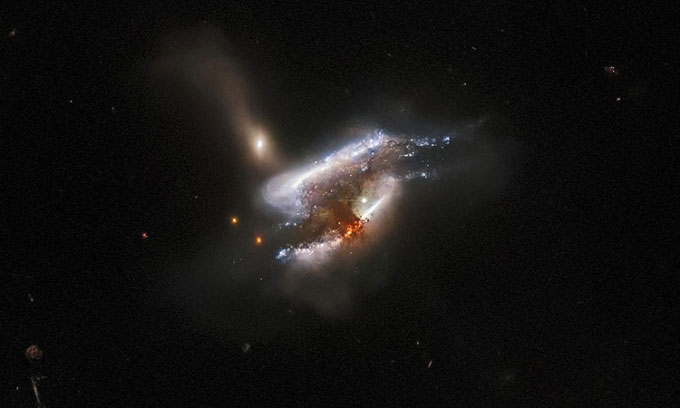Observations from space and ground-based telescopes provide a stunning view of the collision between three galaxies known as IC 2431.
First discovered on February 24, 1896, by French astronomer Stéphane Javelle, IC 2431 is a distant galaxy system that is merging, located approximately 681 million light-years away in the constellation Cancer. Initially identified as just a nebula, subsequent observations have indicated that this is a collision involving at least three galaxies with intense star formation.

The merging galaxy system IC 2431. (Image: NASA/ESA)
On February 18, NASA released a new image showcasing the beautiful clouds of dust and swirling light of IC 2431, where star formation and chaotic tidal distortions occur due to the gravitational interactions between the three galaxies. Dense clouds of dust have obscured the core of the system.
The composite image includes infrared, optical, and ultraviolet observations from the Advanced Survey Camera (ASC) on the Hubble Space Telescope, the Dark Energy Camera (DECam) on the ground-based Victor M. Blanco Telescope in Chile, and the Sloan Digital Sky Survey in New Mexico.
The new observations of IC 2431 are part of the Galaxy Zoo citizen science project—the largest survey of galaxies ever conducted, involving over 100,000 volunteers to classify 900,000 previously unexplored galaxies.
“The project has achieved results equivalent to many years of work by a professional astronomer in just 175 days, paving the way for similar citizen astronomy projects,” NASA emphasized. “Subsequent Galaxy Zoo projects include the largest studies to date on galaxy mergers and dwarf galaxies, as well as entirely new types of star-forming galaxies.”


















































